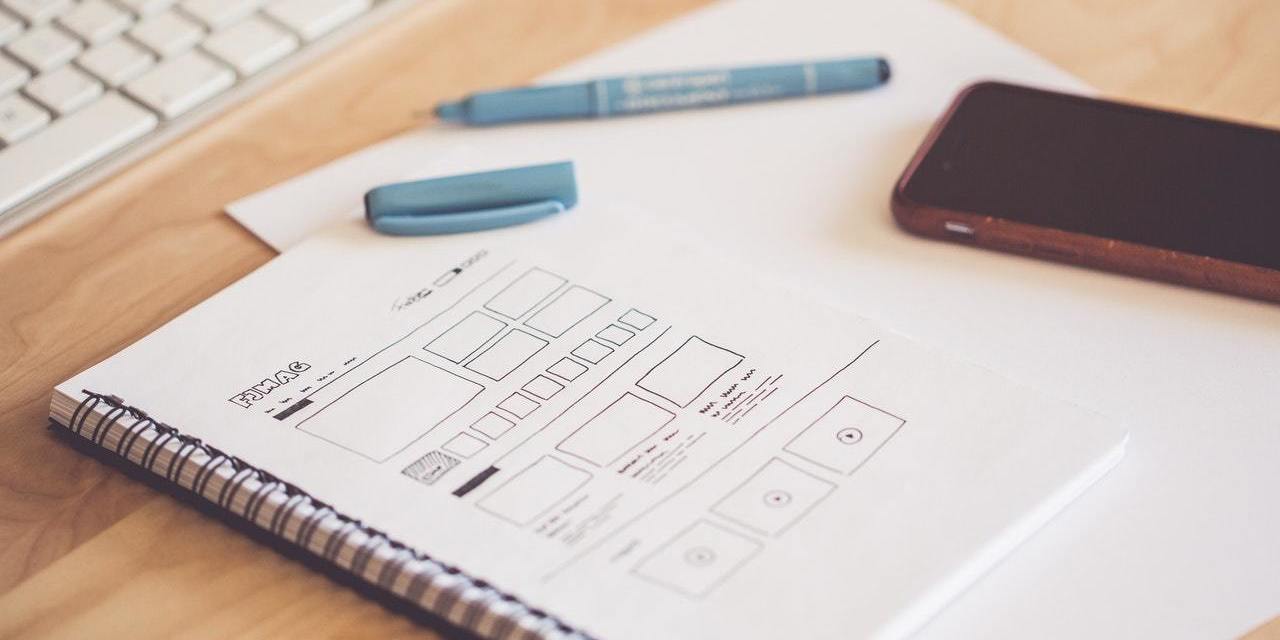Guide To Web Design For Beginners
Posted on 30th July 2020
If you run a small business, in today’s competitive marketplace you simply have to have a website. In fact, you can’t really be without one. However, when you’re just starting out and finances are tight, it can seem daunting to have to lay out a big chunk of cash on web developers.
It can often feel like you’re stuck between a rock and a hard place. You know you need an online presence but the fees that some web designers are asking are simply unrealistic at this stage in your business development.
However, it doesn’t have to be this way. Web design is no longer as complicated as it once was. The proliferation of template sites has brought costs down and made web design and development more of a level playing field.
This guide to web design for beginners tells you everything you need to know about creating your own website. Whether you’re going to tackle the problem yourself or are going to look for an affordable designer to help you realise your ideas, there are more web design options now than there ever have been.
Web design is about bringing together a number of key factors, combining creative vision, technical skill, marketing knowledge and content creation. Here’s what you need to know.
SEO design

The ultimate aim of any website is to reach as many people as possible. To do this you need to appear as high up the search engine page rankings as possible. But as one of billions of websites out there, how do you ensure that your site is at the top of the search tables?
It’s called search engine optimisation and, at its most basic, it’s about making sure your site is designed to include certain features that make it more visible to the algorithms that create search engine listings. This involves a combination of; including the right key terms that people search for, producing interesting content, ensuring titles and tags are relevant and linking your site both internally and externally.
It may sound complicated but on the design platforms there are plug-ins that you can use to optimise your site, or you can enlist the help of a design specialist to make sure your site is working as hard as it can.
Website conversion

Getting people to your site is the first challenge. But once they’re there, you need to keep them there and ultimately turn their interest into sales or leads. This is called conversion and is the ultimate end goal of the design process. But it’s easier said than done.
Online attention spans are microscopic. Unless users can find what they’re looking for within seconds, they’ll go elsewhere. The visual design and structure of your site are therefore integral to driving traffic into your sales funnel.
In practice, this means having engaging content front and centre with clear and obvious calls to action driving customers to where they want to be. You need to make sure that your goods and services are showcased in the best light, with good quality copy and images full of useful information.
You need to make sure that any sales or checkout areas are simple and easy to use, and that you’re well connected to social media. Having features such as a live chat or review section will also help to build trust with potential customers, as well as providing SEO-rich information.
Loading speeds should be fast, so apply the basic rules of web page layout and ensure that negative space is used well. You can also keep your content varied and interesting by including video and animation to attract attention.
Optimise your website design

These days, we browse the web on a range of different devices. It’s not just laptops and desktops any more. So, you need to make sure that your web design is responsive and works across all the available devices – specifically mobile phones and tablets.
In fact, in November 2016 mobile web use was larger than that of desktops for the first time and this is a trend that looks likely to grow. Many designers are even opting to go for a mobile-first design, which puts phone and tablet users ahead of larger devices. This is very much an individual call and depends on how well you know and understand your target market. It might be the right decision for some businesses but probably not all.
Avoid mistakes

There are a number of common design mistakes that can hinder the effect your website can have for your business. Perhaps the biggest mistake is to try and design a website on the cheap. Yes, template sites have made designing a site possible for almost anybody, but just because making a site is easy doesn’t mean it will be good or follow all the above principles.
If you’re willing to put the time in and design a site with good SEO, aimed towards conversion and with engaging content, then by all means go for it. But this might just be one thing that is better off left to the professionals.
Common errors include poor navigation, which makes it confusing for visitors to find their way around your site, or making the site too busy and with too much information. Ignoring the metadata is another big mistake as this is very important for your site’s SEO. Using irrelevant, poor, or cheesy images is another key error and can be enough to put off a new visitor in seconds.
Luckily, there are web design specialists out there who can help you avoid these mistakes and stick to the core principles outlined above. They will work closely with you to try and understand your market and aims, then create a high-functioning and skilfully designed site that helps to boost your business.
If you would like to know more about the website design services we provide here at it’seeze Web Design Windsor, then get in touch with our team today. We look forward to hearing from you.
Tagged as: web design
Share this post:



